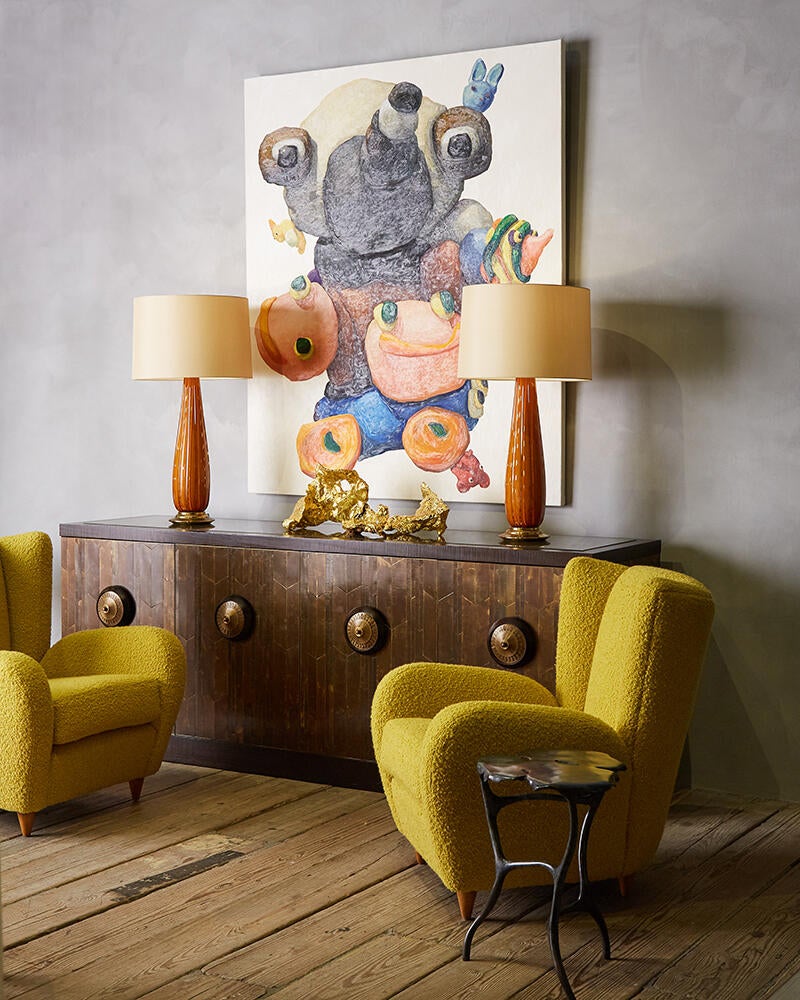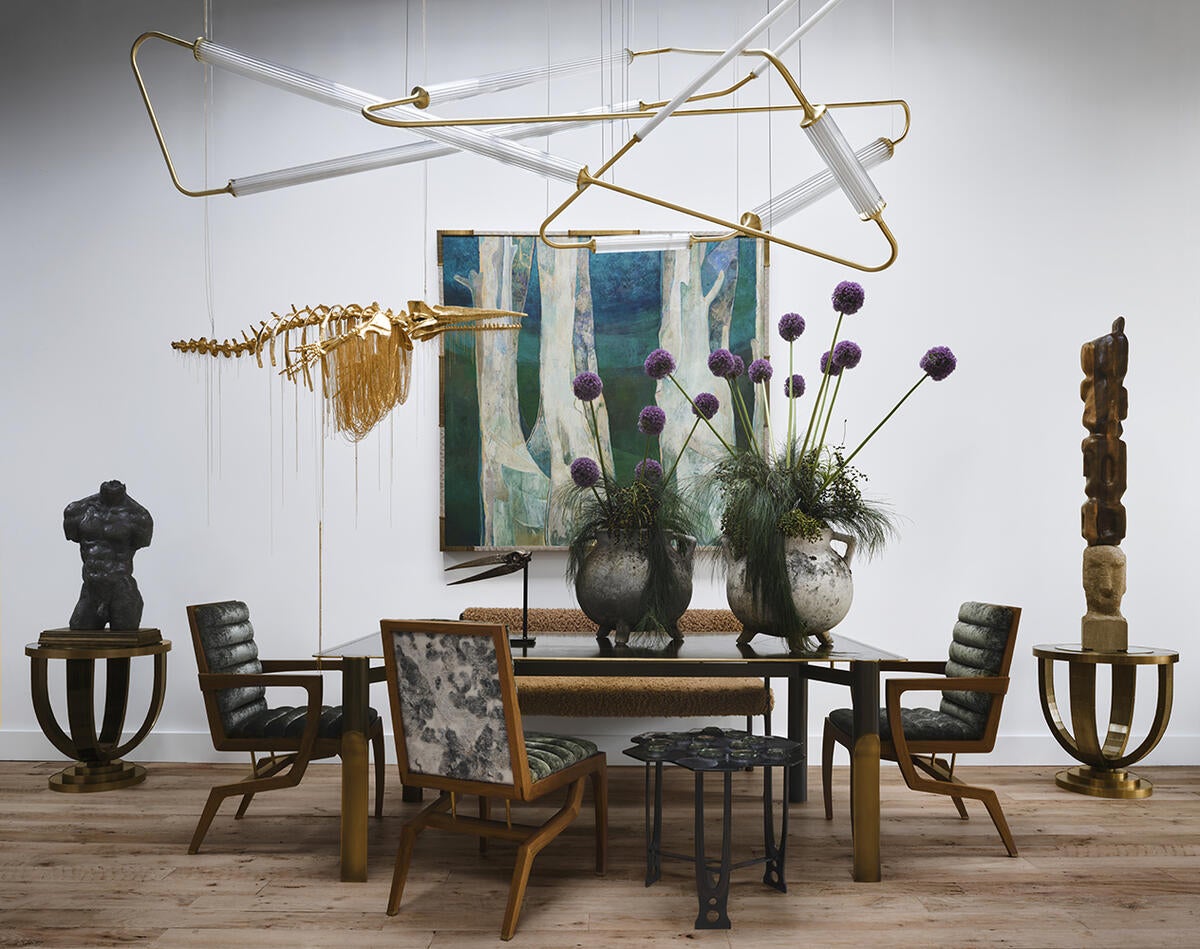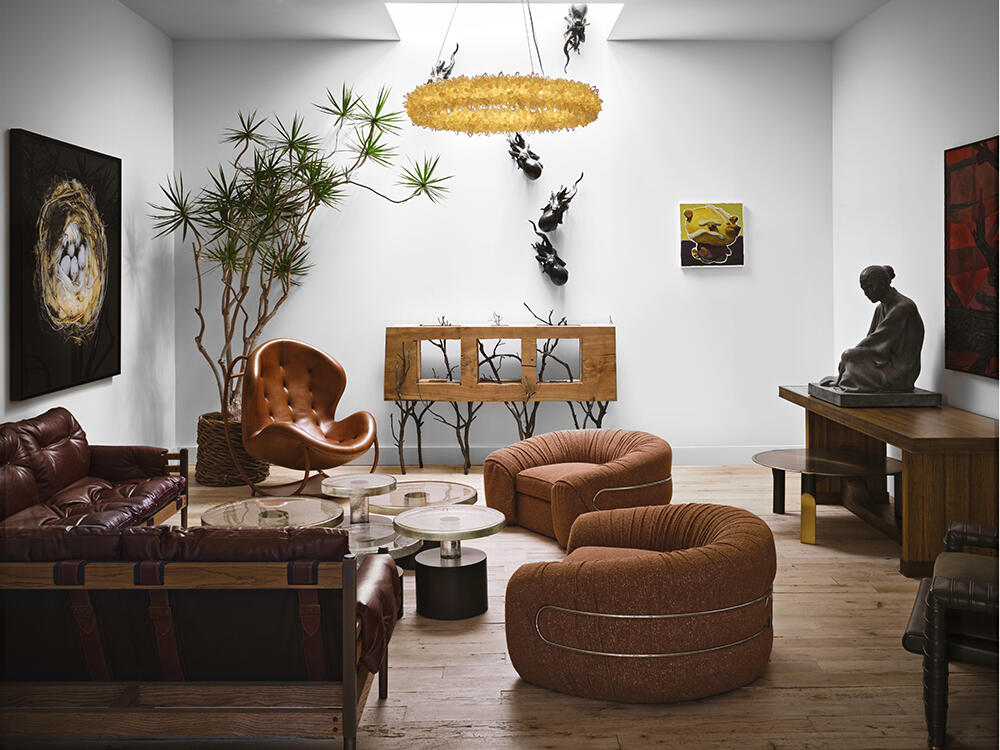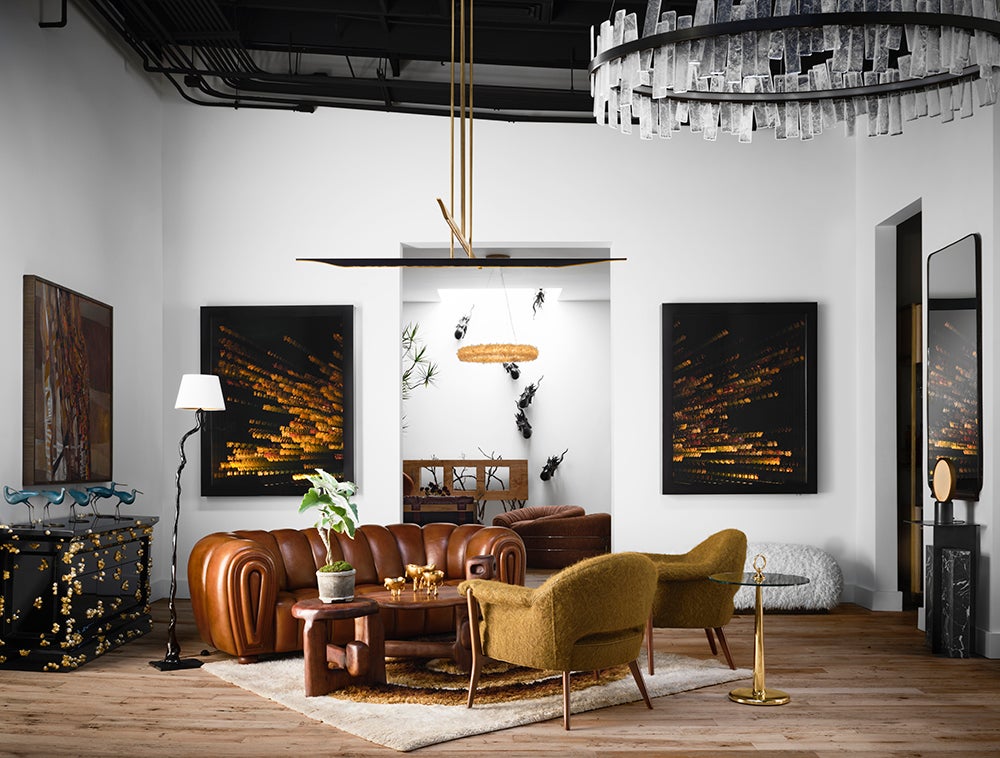In Business of Home’s series Shop Talk, we chat with owners of home furnishings stores across the country to hear about their hard-won lessons and challenges, big and small. This week, we spoke with Darin Geise, the creative director and owner behind the high-end, gallery-style showroom Coup D’Etat in San Francisco.
When the showroom burst onto the Bay Area’s design scene in the late 1990s, Geise was entering an industry tightly gate-kept by the trade. That respect for interior designers and their needs still guides how he operates today, nearly two decades after launching Coup D’Etat. In fall 2022, the business expanded to a Los Angeles location, reaching a market that Geise is still figuring out. Ahead, he explains his tentative first steps into the retail business, the stress of gallery resets, and the importance of editing, editing, editing.
What was your career like before the shop?
I grew up in Nebraska, and being gay in Nebraska in the ’90s—obviously, I needed to go somewhere else. In 1995, I moved to San Francisco to work for Neiman Marcus. One day, I snuck in the back door of the [San Francisco] Design Center and into the Shears & Window showroom. They represented Rose Tarlow, Dennis & Leen, some very nice lines. I was redoing my apartment constantly, and people were telling me I should be a designer. I naively thought that because I enjoyed the process of design—the hunt, shopping—that making it my career would make me not like it anymore. But I got a job at Shears & Window and worked there for seven years.
I just fell in love with it as I learned more about furniture and design. I continued buying stuff for my apartment—like when we’d have a floor sample from Rose Tarlow and they’d want to sell it off—and I finally rented a storage space, which got more and more packed. Thinking back, I was really insecure about reselling. What would people think if I was out there, selling stuff [I’d bought]? But I got a space at the Alameda flea market and borrowed a company van and sold everything in about 15 minutes, by 10 a.m. I took the money to buy more stuff, but I was still working at the design center, at a time when it was strictly to the trade. This was before online buying, so if you wanted good stuff, you had to get it [through] a designer, from the design center. [That experience] formed a lot of my early learning about furniture construction and design, and how designers work.

I would work at Shears & Window from Monday through Friday, and I started learning how to refinish furniture, and very crude, rudimentary upholstery. I just loved my side hustle so much. I gave up my apartment and moved into a space two doors down from the warehouse, and put in a kitchenette and bathroom and lived where I refinished furniture. On October 24, 2004, I took Shears & Window’s client list, sent out invitations and set up my pieces like a showroom. It was wall-to-wall packed with people, really great interior designers, and everyone was like, “What is this place? It’s amazing.” I said, “I guess I have a store now.” I did that for as long as I could, and around Christmas 2004, I was fired from Shears & Window for obvious reasons.
How would you describe your general aesthetic?
It’s changed so much from when I started. It’s very much a gallery vibe. Very, very high-end, minimal pieces, but really galleried. We’re working with these amazing artists and artisans, like [Welsh metalworker] Damian Jones or [Swiss sculptor and lighting artist] Patrick Weder, and then we have some lines like [modern furnishings brand] Ochre; we are the Ochre rep in San Francisco. We do tons of custom work for clients, and then there’s been a really big return, in the last probably four or five years, back to the vintage component. It’s in my DNA!
Can you tell me a bit more about working with the artists on custom pieces? How do you facilitate that?
Let’s look at, say, Patrick Weder. He’s this really cool Swiss guy with a studio in Brooklyn who has developed a unique way of working with concrete and wood. He has come up with this collection of case pieces, and a honeycomb light fixture that is incredible. A client can buy it as they see it, or order customization of it with us.

I’ve read you re-imagine the gallery space often.
Yes, about three times a year in each location. We just finished one in San Francisco this past weekend, and it was, excuse my language, f— hell. The buildup and anxiety that happens for me going into it is so intense, but the end result is so amazing. For these resets, we get new product from the artists and lines we represent, and there’s a big push to get lots of new vintage inventory. We’re just trying to redo the showroom from top to bottom, rearrange things. Walking around the showroom all week, I just feel so alive and inspired. People come in and feel the energy of you being really thoughtful about where each piece is going and what’s next to it and how it all flows.
Do you promote these revamps, like on an email list or social media? Do you make a moment of them?
We are starting to. In the past, we would have big resets and then schedule client appointments to have people go through and see the new pieces. We got away from that a little bit, but we’re starting it back up. But yes, there’s an email campaign with imagery of the new space, then promotion on social media.
What is your sourcing process like? Are you traveling around the world?
I’m constantly looking at artists however I can, [whether] it’s at Salone, art or furniture fairs, ICFF, Art Basel, galleries in Europe—any artists and lines that fit within our aesthetic. Some showrooms have a hundred lines, but we want to continue to edit the lines we represent. It’s important to us that the lines be successful for the artist. This is their livelihood. I want to do the best job that we can do to represent them and sell them. If it’s not working for us, it’s not working for them.

You mentioned a swing back to vintage. Is that a response to the market? What led you to that conclusion?
The aesthetic in San Francisco just really changed. There was a younger set of very successful people in the tech boom, and they were not looking for antique furniture. The vintage component didn’t go away totally, but it just was a smaller and smaller percentage of what we were carrying. I really missed it, and I’m super passionate about it. I have done a couple of house projects, and a lot of the pieces I’ve put in are vintage. I’m just seeing that the trend is up with that.
Lastly, tell me about expanding to L.A. recently. Obviously, San Francisco and L.A. are both gigantic markets, but the customer is probably a bit different. What’s it been like?
It’s something we’re still figuring out. I think we’ve been really well-received. Clients are happy we’re there. The space in Los Angeles is a lot smaller than what we have in San Francisco, so there are many resets there because if you sell a few pieces off the floor, it can mess up the flow of the showroom. Inventory comes in and out more frequently. We’re fine-tuning the product mix. The light in L.A. is totally different than in San Francisco, which plays a big part; things that work in L.A. are not going to work in San Francisco, and vice versa. We’re trying to edit appropriately.
Homepage image: Coup d’Etat’s new Los Angeles gallery | Douglas Friedman





























